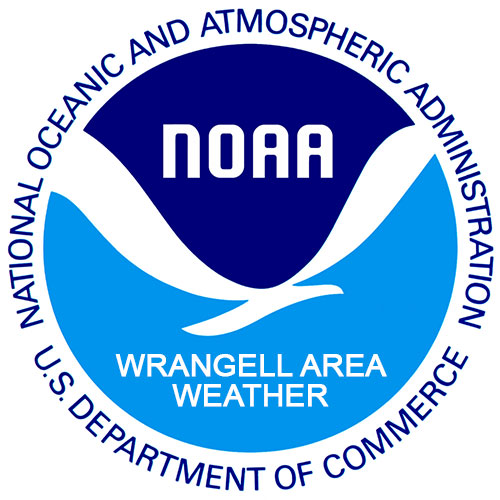
In part two of this series, we learn why a tribal commission isn’t happy with British Columbia’s mining regulations. And why the mine’s owner said they are proud of how they’re running the mine. Part one has more detail of the report.
Red Chris Mine sits 25 miles from Alaska’s border in the Stikine River Watershed. It has operated for a decade, but its ownership changed two years ago. Before the new company, Newmont, bought the mine, conservation scientists conducted research over a seven year span. Newmont has made some environmental adjustments since they acquired the mine in 2023. But they are also hoping to expand the copper and gold mine, which is already bigger than Wrangell Island. That’s even after an environmental report was published last month. It shows heavy metals have leached into a transboundary Alaska and British Columbia watershed. Communities downstream of the Stikine River are concerned about this, including Wrangell’s tribal government, the Wrangell Cooperative Association.
“It’s very difficult when you have colonial constructs imposed on you,” WCA Tribal Administrator Esther Aaltséen Reese said. She’s the president of Southeast Indigenous Transboundary Commission, which represents 15 tribal groups in Alaska and Canada. “We view the border as a colonial construct.”
She said downstream tribes are the ones that will get the ill effects of mining and they should have a say in how safe the mines upriver are.
A report last month by SkeenaWild Conservation Trust researched the mine’s impacts over the first seven years of operation. It said that numerous contaminants from the mine, mainly selenium and copper, are elevated in the surrounding creeks and lakes. These levels are high enough to impact aquatic life, according to the report. Reese said she’s worried about the Stikine River salmon that so many rely on.
“Any kind of failure would just have a huge risk to downstream human populations – us here in Wrangell,” she said. “This is a very critical issue.”
Reese said they have requested to meet with Canada’s Tahltan Central Government since the mine is in their territory and they co-manage it with Newmont. KSTK reached out to the Tahltan Central Government and hasn’t received a response.
Researcher hopes the report will act as a model for similar mining projects in B.C.
Adrienne Berchtold is the primary author of the environmental report. She’s an ecologist and mining impacts researcher with SkeenaWild Conservation Trust.
She said her team made the report as a model for other similar proposed mining projects in British Columbia. Currently, there are eight active copper mines operating in the province.
The report states that the leaching contaminants have affected rainbow trout in the mine’s surrounding lakes, which are part of the Stikine River Watershed. Berchtold hopes the findings will encourage B.C. to improve policies and regulations.
“Our concern is that the provincial government has not required mine owners to address that and to really look into what impact those trends might be having on fish in the receiving lakes,” she said.
Newmont spokesperson Kievan Hirji said since they acquired the mine in 2023, the company has established a relationship with the Tahltan First Nation, co-managing the mine under an Impact Benefit Agreement.
“We’re very proud to be going through that process,” he said. “[We] have been working very, very closely with the Tahltan Nation since acquiring Red Chris in 2023 to build a really positive and strong relationship that’s really predicated on that consent as well as transparency and trust and a shared vision for the future.”
According to Hirji, about 15 percent of Newmont workers are members of the Tahltan Nation.
“We also pay royalty payments to the Tahltan Nation,” he said. “That mine is reaching its end of life within the next couple of years, and if that economic success is going to continue, the mine requires an extension to the life of mine.”
That extension, he said, would be an underground mine, or block cave mine. It would sit within the footprint of the existing open pit mine and is expected to last 13 years.
“We will leave it to the province of British Columbia to continue with that engagement.”
First, Hirji said, British Columbia and the Tahltan Nation must assess Newmont’s proposal. The tribal consortium testified this spring against the project.
As for the tailings dams, which hold the mine’s waste, there have been links drawn between the Mount Polley dam and Red Chris’s. Mount Polley’s tailings dam broke in 2014, contaminating nearby waterways. But Hirji said Red Chris’s is constructed differently, even if some of the materials are the same.
“We’ve looked very carefully at the structural integrity of the dam at the Red Chris Mine with Tahltan Central Government, and there is no concern with respect to structural integrity,” he said. “That dam is structurally sound, safe.”
An ongoing concern of downriver tribes is that they haven’t had much say in the mine’s operation. Hirji said that’s not the company’s fault – it’s up to the British Columbia government.
“We will leave it to the province of British Columbia to continue with that engagement,” he said. “We’re really focused on the relationship that we have with Tahltan Nation through the Impact, Benefit and Co-management Agreement, and really building a shared vision with Tahltan Nation.”
Shawn Larabee is the communications manager of BC’s Ministry of Mining and Critical Minerals. He said British Columbia takes environmental protections seriously. He wrote in an email that QUOTE “the scope of consultation the Province undertakes with U.S. Tribes may be different from its consultation with First Nations in B.C.”
Last year’s annual reports of Red Chris Mine are expected to be made available by the B.C. government in the coming weeks.











